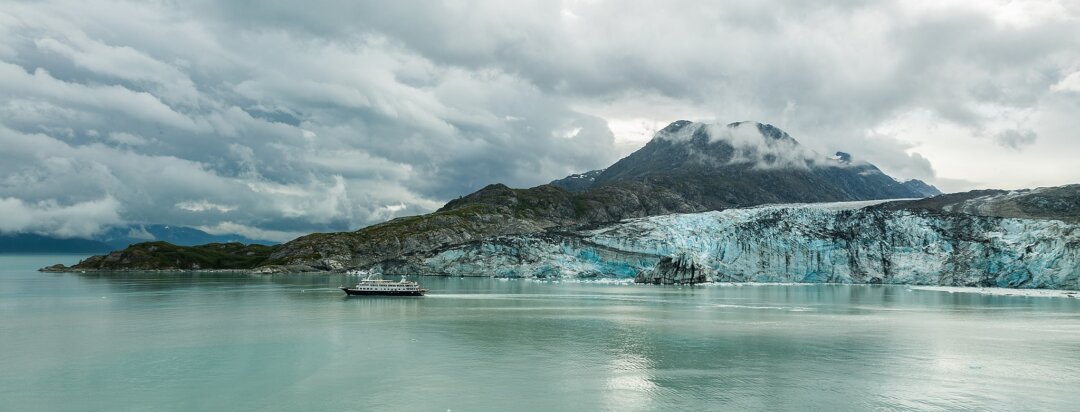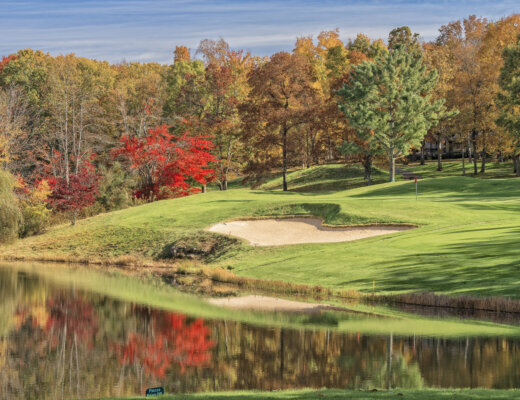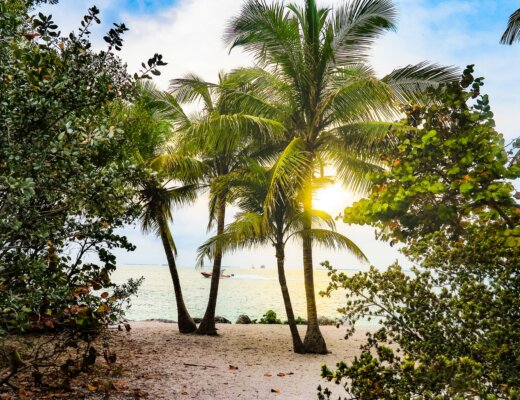Alaska is the largest state in the United States and is located in the far north, bordered by Canada to the east and the Arctic Ocean to the north. It is known for its rugged wilderness, abundant wildlife, and spectacular natural beauty.
The history of Alaska dates back to the time of the indigenous people who have lived in the region for thousands of years. The first European contact with Alaska occurred in 1741, when the Danish explorer Vitus Bering sighted the coast. In 1867, the United States purchased Alaska from Russia for $7.2 million, a deal that became known as the “Alaska Purchase.”
The landscape of Alaska is diverse and varied, with rugged mountains, glaciers, fjords, and vast stretches of tundra. The state is home to many national parks, including Denali National Park, which is home to the highest peak in North America, Mount Denali. The park is also home to an abundance of wildlife, including grizzly bears, wolves, and caribou.
The climate of Alaska is generally cold and harsh, with long, dark winters and short summers. The northernmost parts of the state experience 24-hour darkness in the winter and 24-hour daylight in the summer. Despite the harsh conditions, many people have made their home in Alaska, including native Alaskans, as well as gold miners, fishermen, and oil workers.
Alaska’s economy is heavily dependent on natural resources, including oil, gas, timber, and fish. The state is also a major producer of gold, zinc, and other minerals. Fishing is an important industry in Alaska, with salmon being the most valuable species caught. In recent years, tourism has also become an important part of the state’s economy, with visitors coming to Alaska to experience its natural beauty and unique culture.
The culture of Alaska is rich and diverse, reflecting the state’s history and the many different groups of people who have made their home there. Native Alaskans, who make up around 15% of the state’s population, have their own distinct cultures and traditions. The state also has a strong Russian influence, reflecting its history as a Russian colony, and a strong presence of American, European, and Asian cultures.
Alaska is also known for its unique and colorful local festivals, such as the Alaska State Fair, the World Ice Art Championships, and the Iditarod Trail Sled Dog Race. The Iditarod is a famous annual long-distance sled dog race that covers 1,000 miles through some of the most remote and rugged terrain in Alaska, and it is also a cultural event that celebrates the state’s unique history and people.
Driving on a Road Trip to Alaska: An Overview
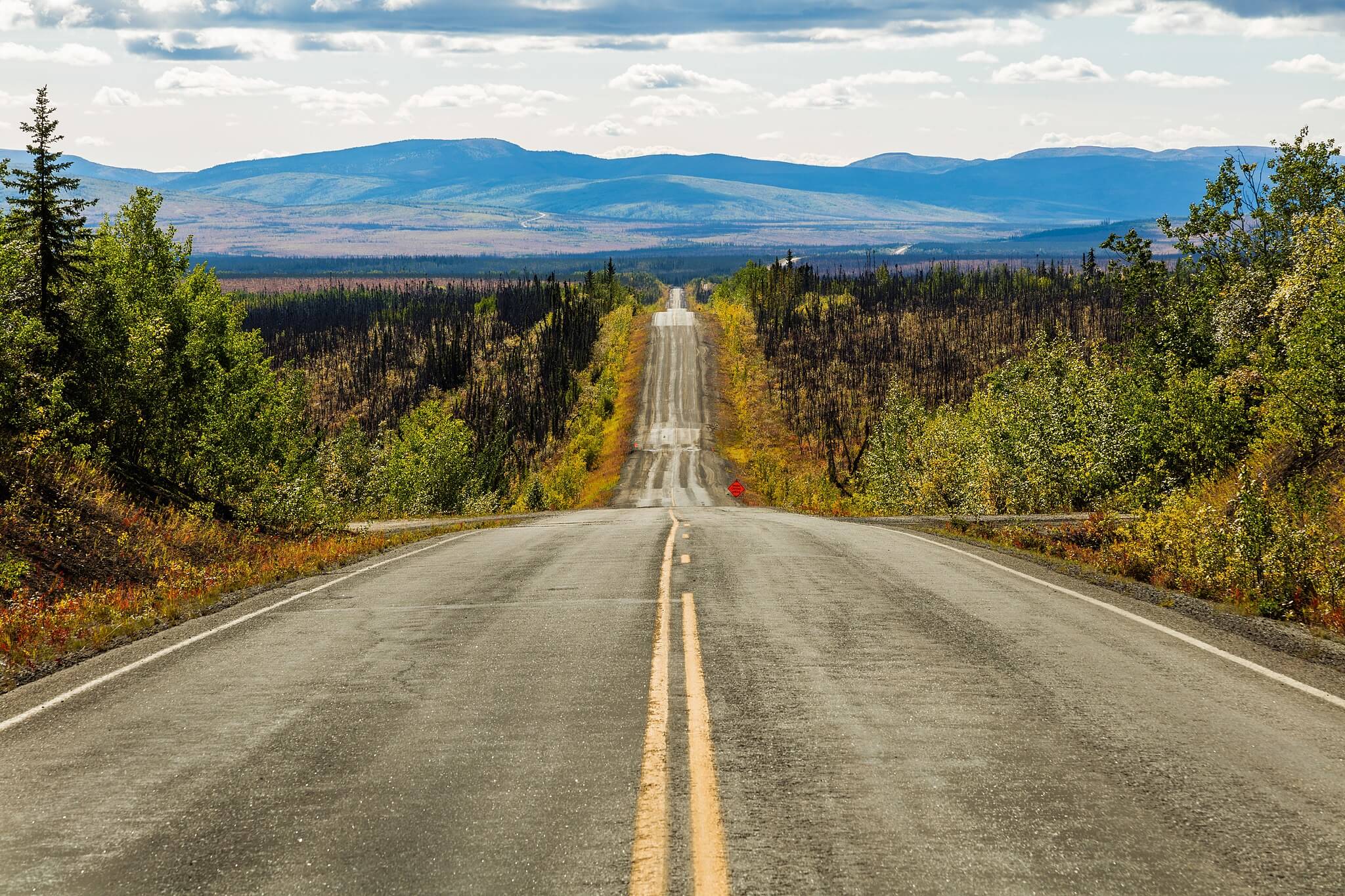
A road trip from America to Alaska is a journey of a lifetime. The vastness of the landscape, the stunning natural beauty, and the unique culture and history of Alaska make it a destination worth traveling to. The trip, however, is not for the faint of heart. It requires a lot of planning, preparation, and a sense of adventure.
The first step in planning a road trip from America to Alaska is deciding on the route. The most common route is the Alaska Highway, also known as the Alcan Highway. This highway stretches 1,387 miles from Dawson Creek, British Columbia to Delta Junction, Alaska. It was built during World War II to connect Alaska with the rest of North America and is now a popular tourist route. The highway is well-maintained and offers plenty of rest stops, gas stations, and campgrounds along the way.
Another popular route is the Cassiar Highway, which is a more scenic and less traveled alternative to the Alaska Highway. The Cassiar Highway starts in Prince George, British Columbia and ends in Watson Lake, Yukon. It is a 715-mile journey through the rugged wilderness of British Columbia and is considered one of the most beautiful drives in North America.
Once the route has been decided on, the next step is preparing for the journey. This includes getting a vehicle that is suitable for the trip, such as a 4×4 or a vehicle with high clearance. It is also important to have a spare tire, tools, and other essentials such as a first aid kit and a fire extinguisher. It’s also important to have the correct documentation, such as a passport or enhanced driver’s license, as the trip will require crossing the Canadian border.
The road trip from America to Alaska is a long one, and it is important to plan for rest stops along the way. There are many campgrounds and RV parks along the route, as well as hotels and motels. It is also a good idea to plan for meals, as there are not many restaurants along the way. It is a good idea to pack a cooler with food and drinks and to bring a camping stove or portable grill for cooking.
As the journey begins, the first thing that will be noticed is the vastness of the landscape. The road winds through mountains, forests, and rivers, and the scenery is breathtaking. The first major stop on the Alaska Highway is Watson Lake, which is known for its Signpost Forest. This is a forest filled with signs from all over the world, and it’s a popular spot for taking photos.
Further along the route, there are many other stops worth visiting. One of the most popular is Whitehorse, the capital of the Yukon. Whitehorse is a small city with a population of about 30,000 people. It is a good place to stock up on supplies and to explore the local culture. Another popular stop is Skagway, which is a historic gold rush town. Skagway is a great place to learn about the history of the gold rush and to explore the local shops and restaurants.
As the journey continues, the scenery becomes even more breathtaking. The road passes through the mountain ranges of the Canadian Rocky Mountains and the Coastal Range. The views are spectacular, and it’s hard not to pull over and take photos. The road also passes through the beautiful valleys of the Alaskan Range, and the scenery is truly awe-inspiring.
What Cities Should You See in Alaska
To some degree, how you drive into Alaska will depend on what cities you’re trying to actually see in Alaska. Don’t forget, it’s still a gigantic state despite there being limited routes into it by ground. So, while considering your Alaska road trip itinerary, consider which one of these cities you might be interested in visiting while you’re there!
- Anchorage – Anchorage is Alaska’s largest city and is often considered the state’s transportation hub. It is located in the south-central part of the state and is home to many popular attractions such as the Alaska Native Heritage Center, the Alaska Museum at Rasmuson Center, and the Alaska Aviation Heritage Museum. Anchorage is also home to many outdoor activities such as hiking, fishing, and skiing.
- Fairbanks – Fairbanks is Alaska’s second-largest city and is known for its historical and cultural significance. It is located in the interior of the state and is home to the University of Alaska Fairbanks. Fairbanks is also known for its natural beauty, including the Northern Lights and the nearby Chena Hot Springs.
- Juneau – Juneau is Alaska’s capital city and is located on the Gastineau Channel in the panhandle of the state. It is only accessible by boat or plane, making it a unique and remote destination. Juneau is home to many popular attractions such as the Mendenhall Glacier and the Juneau-Douglas City Museum.
- Wasilla – Wasilla is located in the Matanuska-Susitna Valley and is known for its proximity to many outdoor activities such as fishing, hunting, and skiing. It is also home to the Iditarod Headquarters, which hosts the start of the famous Iditarod sled dog race each year.
- Kenai – Kenai is a city located on the Kenai Peninsula and is known for its proximity to many outdoor activities such as fishing, hunting, and hiking. Kenai is also home to the Kenai National Wildlife Refuge, which offers visitors the opportunity to see many different types of wildlife such as bears, moose, and eagles.
- Kodiak – Kodiak is a city located on Kodiak Island and is known for its fishing and hunting opportunities. Visitors can also explore the Kodiak National Wildlife Refuge and the Alutiiq Museum, which offers a glimpse into the history and culture of the indigenous Alutiiq people.
- Sitka – Sitka is a city located on Baranof Island and is known for its rich history and culture. Visitors can explore the Sitka National Historical Park, which offers a glimpse into the history of the Tlingit people. Additionally, visitors can also explore the nearby Tongass National Forest and enjoy outdoor activities such as hiking and fishing.
- Ketchikan – Ketchikan is a city located in the southern part of the state and is known for its proximity to many outdoor activities such as fishing, hunting, and hiking. Visitors can also explore the Tongass National Forest and enjoy outdoor activities such as hiking and fishing.
Each of these cities has unique features and offers visitors a chance to experience different aspects of Alaska’s natural beauty and cultural heritage.
Describing the Alaska Highway via Dawson Creek Route
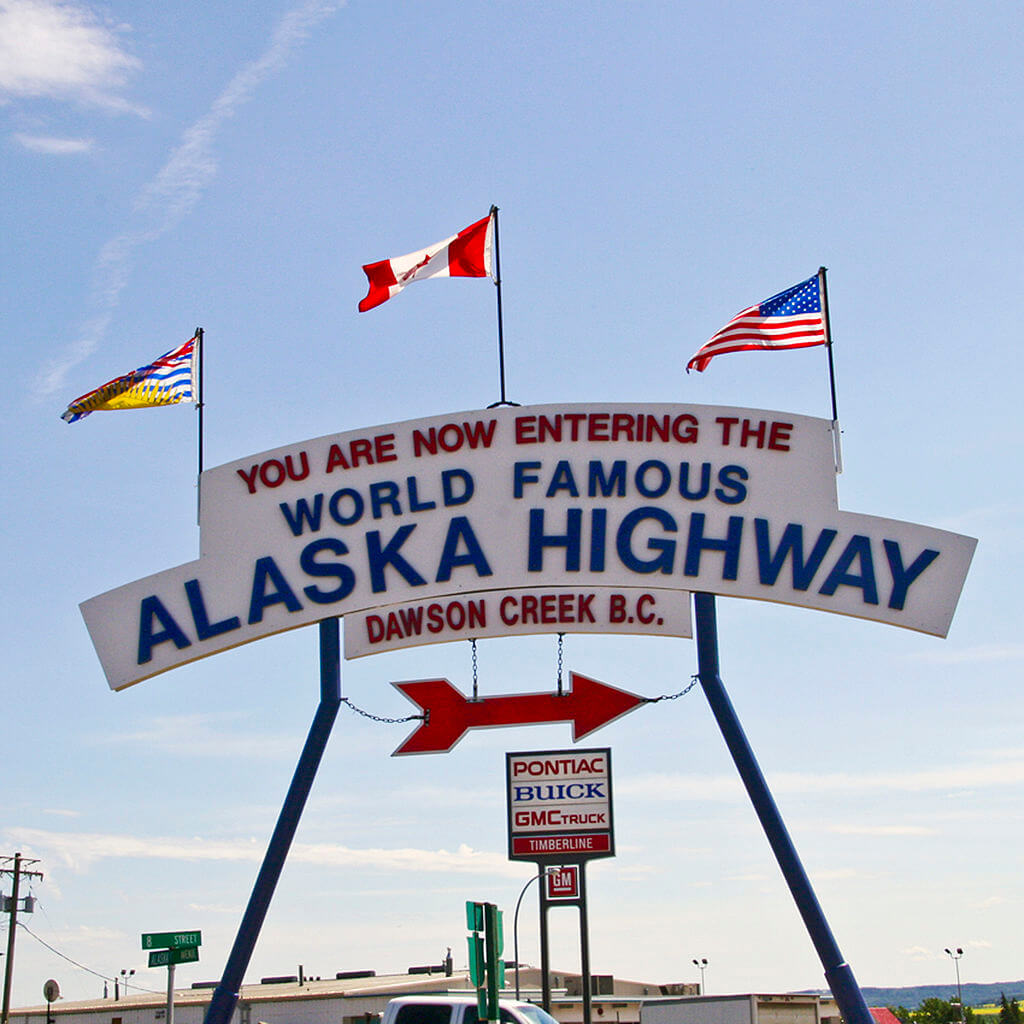
The Alaska Highway is a 1,387-mile (2,232 km) road that runs through Canada, connecting Dawson Creek, British Columbia to Fairbanks, Alaska. The highway was constructed during World War II as a means of connecting Alaska to the continental United States in case of a Japanese invasion.
The journey along the Alaska Highway begins in Dawson Creek, British Columbia. This small town is known as the “Mile 0” city, as it marks the starting point of the highway. From here, the road winds its way through the rugged terrain of northern British Columbia, passing through dense forests, rolling hills, and pristine lakes.
As you travel north, the landscape becomes increasingly wild and remote. The road passes through the Muskwa-Kechika Management Area, an area known for its diverse wildlife and untouched wilderness. Visitors can spot moose, caribou, grizzly bears, and wolves as they drive along the highway.
The highway also passes through several small towns and villages, each with its own unique character and history. Watson Lake is known for its Signpost Forest, a collection of over 75,000 signs from around the world. Whitehorse, the capital of the Yukon Territory, is a popular stop for travelers looking to explore the city’s cultural and historical attractions.
As you continue north, the highway enters the Canadian portion of the Arctic Circle. The road becomes more winding and narrow, and the scenery becomes more rugged and remote. The highway passes through the Tombstone Territorial Park, an area known for its towering peaks and glaciers.
Once you reach the border of Alaska, the road continues through the Yukon-Charley Rivers National Preserve, an area known for its remote wilderness and abundant wildlife. The highway then enters Fairbanks, Alaska, the final destination of the journey.
Overall, the Alaska Highway is a journey through some of the most beautiful and remote wilderness in North America. The road offers a unique opportunity to see the natural beauty of Canada’s northern regions and experience the rich culture and history of the area. The trip can be challenging at times, but it is also incredibly rewarding and unforgettable. The trip takes around 7-10 days to complete depending on how long you choose to stop and explore along the way.
Cassiar Highway Route
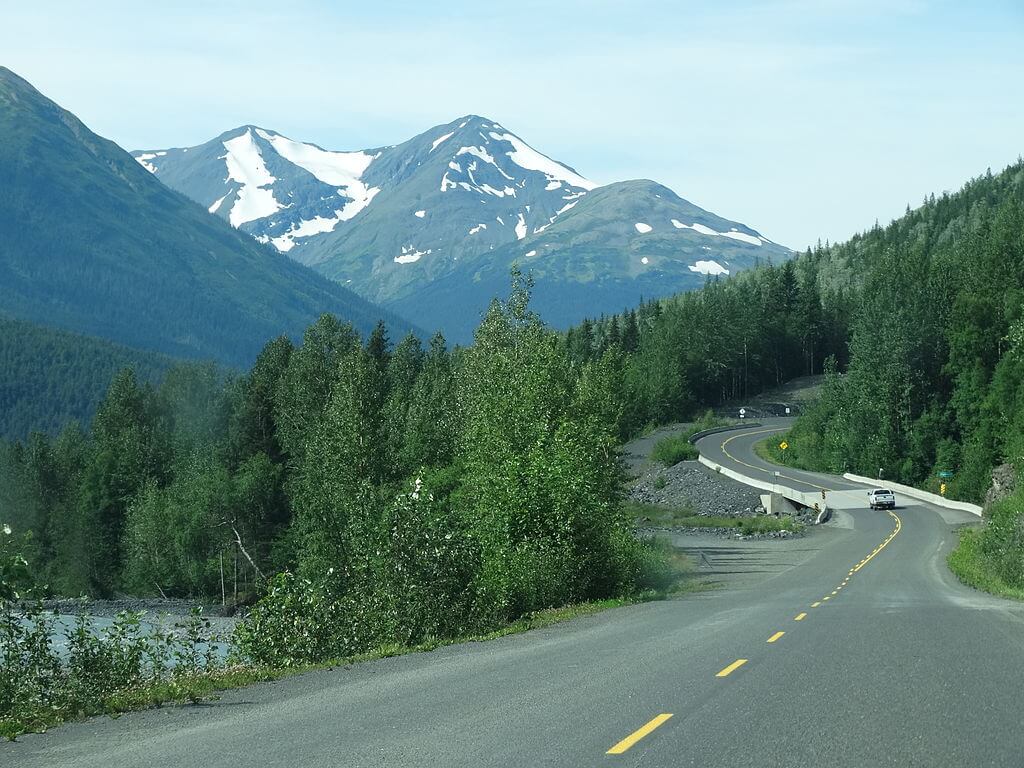
The Cassiar Highway, also known as British Columbia Highway 37, is a scenic route that winds its way through the heart of Canada’s rugged wilderness, connecting the province of British Columbia with the state of Alaska. The highway stretches for over 500 miles, beginning at the junction of Highway 16 in the town of Kitwanga and ending at the border crossing of the Alaska Highway in Watson Lake, Yukon.
The Cassiar Highway is a popular destination for adventure-seekers and nature enthusiasts, offering breathtaking views of the rugged mountains, pristine lakes, and dense forests that make up Canada’s northern wilderness. Along the way, travelers will pass through several small towns and villages, each with their own unique character and charm.
The first stretch of the highway takes you through the heart of the Skeena Mountains, a range of rugged peaks that rise up out of the surrounding forests. This area is home to a diverse array of wildlife, including bears, moose, and caribou, and is a popular destination for hunting and fishing.
As you continue north, the highway begins to climb into the Cassiar Mountains, a range of peaks that rise up to over 7,000 feet. This area is known for its alpine meadows and glaciers, and is a popular destination for hiking, skiing, and snowboarding.
As you pass through the Cassiar Mountains, you’ll begin to see the first signs of the northern tundra. This vast expanse of flat, treeless land is home to a wide variety of Arctic animals, including caribou, musk oxen, and wolves.
As you continue north, the highway begins to pass through the heart of the Yukon, a vast territory that is home to some of the most remote and rugged wilderness in North America. This area is known for its vast expanses of boreal forest, and is home to a wide variety of wildlife, including bears, wolves, and lynx.
As you near the border crossing of the Alaska Highway, the landscape begins to change once again. The forest gives way to the open tundra, and the peaks of the mountains recede into the distance. The final stretch of the Cassiar Highway takes you through the heart of the Yukon, a land of rugged mountains, vast glaciers, and pristine lakes.
The Cassiar Highway is a truly unique and spectacular journey, taking travelers through some of the most remote and rugged wilderness in North America. From the rugged peaks of the Skeena and Cassiar Mountains, to the vast expanses of the northern tundra, this route offers an unparalleled glimpse into the natural beauty of Canada’s northern wilderness. Whether you’re a seasoned adventurer or a first-time traveler, the Cassiar Highway is a journey that is not to be missed.
Pros Of Driving Stewart-Cassiar Highway To Alaska
The Stewart-Cassiar Highway, also known as British Columbia Highway 37, is a scenic and remote route that leads from the northern part of British Columbia, Canada, to the border of Alaska. The highway is approximately 830 miles long and offers a unique and adventurous way to reach Alaska. Here are some of the pros of driving the Stewart-Cassiar Highway to Alaska:
- Scenic views: The Stewart-Cassiar Highway winds through rugged mountains and pristine wilderness, offering breathtaking views of glaciers, lakes, and wildlife. The scenery along the route is truly unique and offers a chance to see parts of Canada that are off the beaten path.
- Remote and uncrowded: The Stewart-Cassiar Highway is relatively unknown and is not as heavily traveled as other routes to Alaska. This means that the road is less crowded and there is a greater chance to see wildlife and experience the wilderness in a more intimate way.
- Opportunity to experience different cultures: The Stewart-Cassiar Highway passes through several small towns and communities, many of which are home to First Nations people. This offers a chance to learn about and experience different cultures and ways of life.
- Adventure: The Stewart-Cassiar Highway is a challenging and remote road that requires a certain level of preparation and self-sufficiency. It is not for the faint of heart, but for those who are up for the challenge, it offers a truly unique and adventurous experience.
- Cost-effective: The Stewart-Cassiar Highway is not as well known as other routes to Alaska, so it is less expensive. The cost of fuel, accommodation, and food along the route is generally lower than on more heavily traveled routes.
- Good opportunity to see wildlife: The route passes through remote wilderness areas where wildlife is abundant. Moose, bears, wolves, and caribou are among the animals that can be spotted along the way.
- Good for camping and outdoor activities: The Stewart-Cassiar Highway offers many opportunities for camping, hiking, and other outdoor activities. The wilderness areas along the route are ideal for these activities and provide a chance to get away from the hustle and bustle of everyday life.
- Good for photography: The Stewart-Cassiar Highway offers a wide range of photographic opportunities, from dramatic landscapes to wildlife, and it is a great chance to capture some truly unique images.
Driving the Stewart-Cassiar Highway to Alaska is a great way to experience the wilderness, culture and adventure of northern British Columbia and Alaska. The route offers a unique and remote experience that is less crowded and less expensive than other routes. The scenery is breathtaking, and it offers the opportunity to see a wide variety of wildlife, as well as the opportunity to camp and participate in other outdoor activities. If you are looking for an adventurous and unique way to reach Alaska, the Stewart-Cassiar Highway is definitely worth considering.
Pros of Driving the Alaska Highway via Dawson Creek Route
The Alaska Highway, also known as the Alcan Highway, is a 1,422-mile road that connects Dawson Creek, British Columbia to Fairbanks, Alaska. It is a popular route for those looking to take a road trip through the beautiful wilderness of Alaska and Canada. There are many pros to driving the Alaska Highway via Dawson Creek to Alaska, including the stunning scenery, the opportunity to see wildlife, and the chance to experience the unique culture of the region.
One of the biggest pros of driving the Alaska Highway via Dawson Creek is the stunning scenery. The route takes you through some of the most beautiful and remote wilderness areas in North America. The mountains, glaciers, and lakes that you will see along the way are truly breathtaking. The highway also takes you through the Yukon Territory, which is home to some of the most beautiful landscapes in the world. You will see vast expanses of wilderness, including forests, tundra, and rivers.
Another pro of driving the Alaska Highway via Dawson Creek is the opportunity to see wildlife. The route takes you through areas that are home to a wide variety of animals, including caribou, moose, grizzly bears, and wolves. These animals are often seen along the side of the road, and you may even have the chance to see them up close. This is a great opportunity for those who love wildlife and nature to experience some of the most beautiful and unique animals in the world.
Another pro of driving the Alaska Highway via Dawson Creek is the chance to experience the unique culture of the region. The route takes you through small towns and villages that are home to many different cultures and traditions. You will have the opportunity to learn about the history of the area, and you will be able to see the different ways of life that the people of Alaska and Canada have. You will also have the chance to try some of the local food and drink, which is sure to be a highlight of your trip.
The driving experience itself is also one of the pros of the Alaska Highway via Dawson Creek. The route is well-maintained and well-marked, making it easy to navigate. You will also have the opportunity to drive through some of the most remote areas in North America, which is a unique and exciting experience. The road is smooth and easy to drive on, and you will have plenty of opportunities to stop and take in the scenery.
Lastly, another pro of driving the Alaska Highway via Dawson Creek is the opportunity to make memories that will last a lifetime. Whether you are traveling with family, friends, or alone, this road trip is sure to be an unforgettable experience. You will see some of the most beautiful landscapes in the world, and you will have the opportunity to experience the unique culture of the region. It is a journey that will stay with you forever, and one that you will always remember fondly.
How to Stay Safe Driving to Alaska
Driving in Alaska can be a unique and challenging experience, as the state’s vast wilderness and varied weather conditions can present a number of hazards for drivers. However, by following a few key safety tips, you can ensure that you arrive at your destination safely and without incident.
The first and most important step in driving safely in Alaska is to be prepared for the conditions of the road. This means checking the weather forecast before you set out, and being prepared for the possibility of snow, ice, and high winds. It is also important to have a good set of winter tires, as well as a supply of emergency supplies, such as food, water, and warm clothing.
Another important consideration when driving in Alaska is to be aware of the state’s wildlife. Moose, caribou, and bears are all common in Alaska, and they can be a major hazard on the roads. To avoid collisions, it is important to be alert and aware of your surroundings, and to be prepared to take evasive action if necessary.
When driving on the highway, it is also important to be aware of the other vehicles on the road. This means staying in your lane, and being aware of the speed and position of the other vehicles around you. It is also important to use your signals when changing lanes or turning, and to avoid tailgating or other reckless driving behaviors.
In addition to being aware of the conditions of the road and the other vehicles around you, it is also important to be aware of your own physical and mental state when driving. This means getting plenty of rest before setting out, and avoiding distractions such as eating or using your phone while driving. It is also important to be aware of your own limitations, and to know when to pull over and take a break if you are feeling tired or stressed.
Why Drive Instead of Fly to Alaska
The truth is, driving to Alaska isn’t for the faint of heart. If it’s something you’re considering it, really think about if driving to Alaska is something that is worth the cost. What I mean by cost isn’t necessarily what comes out of your wallet, but rather the toll that it will take on you both mentally and physically – unless you’re someone who is very familiar with long road trips.
It’s a beautiful drive, but not only will it be expensive, it will be tiresome, exhausting, will test your patience, sometimes boring, and even a bit dangerous. However, if you plan properly for driving to Alaska instead of flying, is it worth it?
Definitely.
The journey to Alaska takes you through a diverse array of terrains, including mountains, forests, deserts, and even tundra. This can be a great way to gain a deeper understanding and appreciation of the natural beauty of North America.
In addition to the natural beauty, driving to Alaska also allows for a greater sense of adventure and exploration. The journey itself can be an adventure, as you will be traveling on some of the most remote and rugged roads in the country. This can be especially appealing for those who enjoy off-roading and pushing the limits of their vehicles.
There are also several practical benefits to driving to Alaska. For one, it can be a more cost-effective option than flying, especially if you are traveling with a group or have a lot of gear to bring with you. Additionally, driving allows you to bring along any equipment or supplies that you may need for your trip, such as camping gear, fishing equipment, or even a small boat.
All in all, driving to Alaska can be a truly unique and rewarding experience, offering a greater sense of freedom, adventure and an opportunity to see and experience a wide range of landscapes and environments. It’s a journey that will stay with you for a lifetime, and one that will be worth every mile on the road.

